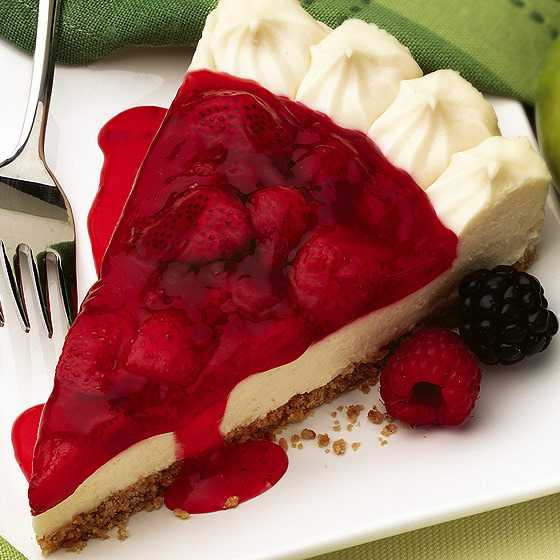A good prop isn’t a decoration or a bystander but a player. The cake that dominates the stage picture midway through Ivo van Hove’s Kings of War is never mere set dressing. It’s the closest thing to a UN peacekeeping mission in this production of Shakespeare’s fractious history plays: glistening with promise yet ultimately doomed.
When the Duke of York seizes power, he remodels the war room in which the play is set. Regime change begins with interior design: as I wrote here, the functional bunker gets a cosy makeover, all leather sofas and resident DJ. It strives for an approachable first family vibe, where factions can hunker down together and tuck into cake served up by Queen Elizabeth. Live screened images shape the production’s aesthetic, and here a close up of the cake, seen from above, fills the screen. A sea of dark fruit edged by a crown of whipped cream rosettes, it hovers like an icon of truce amid the civil wars.
Various critics have defined this cake as cheesecake, fruitcake or flan. My own best guess at the Barbican was gateau (it’s the retro rosettes). The production’s camerawork, often fearlessly forensic, couldn’t get quite close enough to settle the question. Were there layers? A foundation of sponge or pastry? Tantalisingly, I couldn’t tell.
On reflection, cheesecake makes the best sense. A velvet sump of luxury, yet within the bounds of everyday. It’s no spectacular dessert or afternoon tea showstopper, but something more homely. The Yorks break out the scatter cushions and try to foster the sense that the usurper’s command station is a regular household. Everyone settles on the sofa as Elizabeth portions out the cake, hands round the slices and dinky pastry forks. People whose default volume setting is ‘paranoid ruckus’ are soothed by cake and tea party civility, murmuring their appreciation with each mouthful. Even the king’s loose-cannon brother (soon to become Richard III) is forking up the sponge. A shouty dynamic is stilled: Elizabeth pipes up, and everyone waits politely because her mouth is full.
The camera has shown us the cake of peace shared around, slice by decorous slice. It seems that the disputatious crew can play nice after all. But suddenly it all kicks off. A polite inquiry about another brother (assassinated by Richard). Accusations and counter accusations. Full-volume brawling. Plates are pushed aside.
Everyone hurtles off as the king has a funny turn, and peace is trampled by fear and ambition. Only the suave minister Buckingham, who had been sitting in a far corner, remains. He looks around, shrugs, moves in and takes another slice. Why not? With Richard moving towards power, there will be precious few chances for leisure snacks. The king is dead, long live the cake.
Apology: I couldn’t find a photo of this scene, let alone the Toneelgroep cake, but the Sara Lee fruit and cream topping above gives the right idea.
Follow David on Twitter @mrdavidjays


We can confirm that, whilst at the Barbican, the King’s of War cake began life as a sponge flan filled with a tin of cherry pie filling and decorated with a can of squirty cream (a simple make for any stage manager). However, after a couple of performances, the cast decided that our offering was a little too sweet, and so the cake was replaced with something slightly grander from K0nditor and Cook!
Rachel & Lu – Barbican Theatre Stage Managers.
Rachel & Lu, you are marvellous. Thank you! This may have major implications for theatre criticism – the rise of Richard III as marked by increasingly ambitious cake choices?
It may have major implications for props budgets as well!